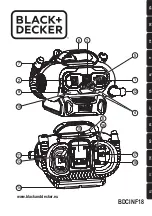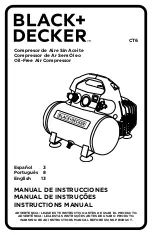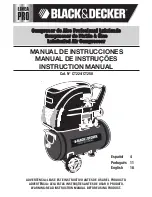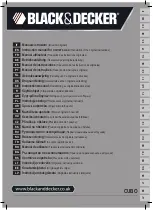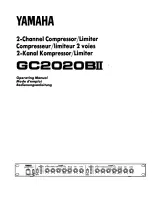
070.750-IOM2 (JAN 21)
Page 17
HPS 273 ROTARY SCREW COMPRESSOR
MAINTENANCE
Vibration analysis
Periodic vibration analysis can be useful in detecting bear-
ing wear and other mechanical failures. If you are using
vibration analysis as a part of your preventive maintenance
program, take the following guidelines into consideration:
• Always take vibration readings from exactly the same
places and at exactly the same percentage of load.
• Use vibration readings taken from the new unit at
start-up as the base line reference.
• Evaluate vibration readings carefully because the
instrument range and function used can vary. It is pos-
sible to easily misinterpret finding.
• Other equipment operating in the vicinity or connected
to the same piping as the unit can influence vibration
readings.
Oil quality and analysis
High quality and suitable oil is necessary to ensure com-
pressor longevity and reliability. Oil quality rapidly dete-
riorates in systems containing moisture and air or other
contaminants. In order to ensure the quality of the oil in
the compressor unit:
• Only use Frick oil or high quality oils approved by John-
son Controls-Frick for your application.
• Only use Frick SuperFilter™ elements. Johnson Con-
trols-Frick Engineering must approve, in writing, any
substitutions or warranty claim may be denied.
• Participate in a regular, periodic oil analysis program to
maintain oil and system integrity.
Operating log
Using an
permits thorough analysis of
the operation of a system by those responsible for its
maintenance and servicing. Continual recording of gauge
pressures, temperatures, and other pertinent information,
enables the observer and serviceman to be constantly
familiar with the operation of the system and to recognize
immediately any deviations from normal operating condi-
tions. It is best practice to take readings at least daily.
Troubleshooting guide
Successful problem solving requires an organized approach
to define the problem, identify the cause, and make the
proper correction. Sometimes it is possible that two
relatively obvious problems combine to provide a set of
symptoms that can mislead the troubleshooter. Be aware
of this possibility and avoid solving the wrong problem.
Warning
Avoid condensation of refrigerant, gases, or water in
the compressor. Ambient conditions may require heat
tracing and insulation of the compressor package
components and piping.
Catastrophic failure may occur if condensation is pres-
ent.
Abnormal operation
analysis and correction
Four logical steps are required to analyze an operational
problem effectively and make the necessary corrections:
1.
Define the problem and its limits.
2. Identify all possible causes.
3. Test each cause until the source of the problem is
found.
4. Make the necessary corrections.
The following list of abnormal system conditions can cause
abnormal operation of the HPS 273 compressor:
•
Oil flow is too high at low speed
• Discharge temperature is too close to condensing
temperature
•
Insufficient or excessive gas load
• Excessively high suction pressure
• Excessively high discharge pressure
• Excessively high or low temperature coolant to the oil
cooler
• Excessive liquid entering the compressor (slugging)
•
Insufficient oil cooling
• Excessive oil cooling
• Incorrect gas line sizing
• Improper system piping
• Wrong operation of hydraulic operated plug valve
• Problems in electrical service to the compressor
• Moisture present in the system
Make a list of all deviations from normal compressor
operation. Delete any items that do not relate to the
symptom and separately list those items that might relate
to the symptom. Use the list as a guide to further investi-
gate the problem.
The second step in problem solving is to decide which
items on the list are possible causes and which items are
additional symptoms. High discharge temperature and high
oil temperature readings on a display may both be symp-
toms of a problem and not causally related.
The third step is to identify the most likely cause and take
action to correct the problem. If the symptoms are not
relieved, move on to the next item on the list and repeat
the procedure until you have identified the cause of the
problem. After identifying and confirming the cause, make
the necessary corrections.































